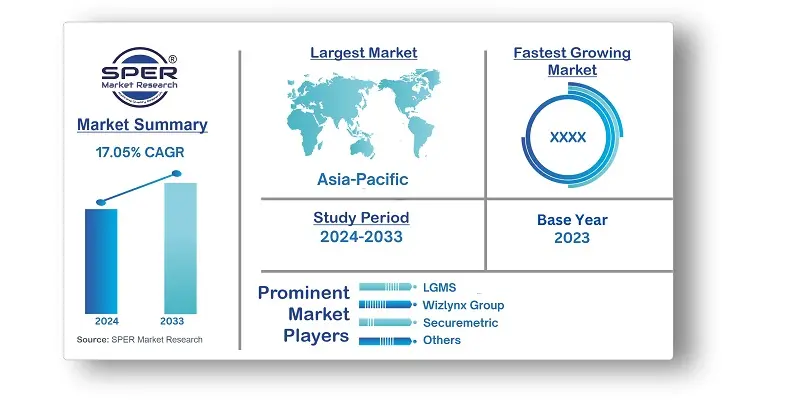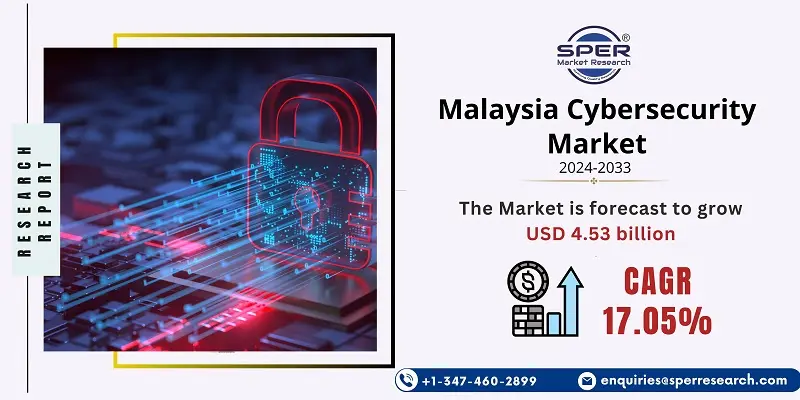
Malaysia Cybersecurity Market Growth, Trends, Size, Demand, Share, Revenue and Future Outlook
Malaysia Cybersecurity Market Size- By Offering, By Deployment Mode, By End User- Regional Outlook, Competitive Strategies and Segment Forecast to 2033
| Published: Jul-2024 | Report ID: IACT24135 | Pages: 1 - 110 | Formats*: |
| Category : Information & Communications Technology | |||
- In April 2022, IBM Malaysia Sdn Bhd and Tech Mahindra announced a cooperation to expand the cybersecurity services accessible to Malaysian organisations, such as managing security compliance and improving commercial information systems. As part of this relationship, Tech Mahindra and IBM will co-develop innovative products and services while also improving existing ones. Guardium, Cloud Pak for Security, and QRadar XDR are some of the available options.
- In February of 2022, SecIron and Cybersecurity Malaysia (CSM) have forged a strategic relationship to raise awareness among Malaysian businesses about the importance of mobile application and Internet of Things system security. Section and CSM will work closely together to promote industry best practices for businesses to mitigate the impact of cyberattacks and raise awareness about mobile application security and data protection.


| Report Metric | Details |
| Market size available for years | 2020-2033 |
| Base year considered | 2023 |
| Forecast period | 2024-2033 |
| Segments covered | By Offering, By Deployment Mode, By End User |
| Regions covered | Eastern, Northern, Southern, Western, Central |
| Companies Covered | LGMS, Wizlynx Group, Securemetric, Akati Sekurity, IBM Corporation, Cisco Systems Inc, AVG Technologies, Nexagate, Capgemini, Ishan Tech. |
- Large Enterprises
- Small and Medium Enterprises (SMEs)
- Financial Institutions
- Educational Institutions
- IT and Technology Companies
- Healthcare Providers
- E-commerce Platforms
- Telecommunication Providers
- Critical Infrastructure Operators
- Cybersecurity Service Providers
| By Offering: |
|
| By Deployment Mode: |
|
| By End User: |
|
- Malaysia Cybersecurity Market Size (FY’2024-FY’2033)
- Overview of Malaysia Cybersecurity Market
- Segmentation of Malaysia Cybersecurity Market By Offering (Security Type, Services)
- Segmentation of Malaysia Cybersecurity Market By Deployment Mode (Cloud, On-premises)
- Segmentation of Malaysia Cybersecurity Market By End User (BFSI, Healthcare, Manufacturing, Government & Defense, IT & Telecommunication, Other)
- Statistical Snap of Malaysia Cybersecurity Market
- Expansion Analysis of Malaysia Cybersecurity Market
- Problems and Obstacles in Malaysia Cybersecurity Market
- Competitive Landscape in the Malaysia Cybersecurity Market
- Impact of COVID-19 and Demonetization on Malaysia Cybersecurity Market
- Details on Current Investment in Malaysia Cybersecurity Market
- Competitive Analysis of Malaysia Cybersecurity Market
- Prominent Players in the Malaysia Cybersecurity Market
- SWOT Analysis of Malaysia Cybersecurity Market
- Malaysia Cybersecurity Market Future Outlook and Projections (FY’2024-FY’2033)
- Recommendations from Analyst
1.1. Scope of the report1.2. Market segment analysis
2.1. Research data source2.1.1. Secondary Data2.1.2. Primary Data2.1.3. SPER’s internal database2.1.4. Premium insight from KOL’s2.2. Market size estimation2.2.1. Top-down and Bottom-up approach2.3. Data triangulation
4.1. Driver, Restraint, Opportunity and Challenges analysis4.1.1. Drivers4.1.2. Restraints4.1.3. Opportunities4.1.4. Challenges4.2. COVID-19 Impacts of the Malaysia Cybersecurity Market
5.1. SWOT Analysis5.1.1. Strengths5.1.2. Weaknesses5.1.3. Opportunities5.1.4. Threats5.2. PESTEL Analysis5.2.1. Political Landscape5.2.2. Economic Landscape5.2.3. Social Landscape5.2.4. Technological Landscape5.2.5. Environmental Landscape5.2.6. Legal Landscape5.3. PORTER’s Five Forces5.3.1. Bargaining power of suppliers5.3.2. Bargaining power of buyers5.3.3. Threat of Substitute5.3.4. Threat of new entrant5.3.5. Competitive rivalry5.4. Heat Map Analysis
6.1. Malaysia Cybersecurity Market Manufacturing Base Distribution, Sales Area, Product Type6.2. Mergers & Acquisitions, Partnerships, Product Launch, and Collaboration in Malaysia Cybersecurity Market
7.1. Malaysia Cybersecurity Market Size, Share and Forecast, By Offering, 2020-20267.2. Malaysia Cybersecurity Market Size, Share and Forecast, By Offering, 2027-20337.3. Security Type7.3.1. Cloud Security7.3.2. Data Security7.3.3. Identity Access Management7.3.4. Network Security7.3.5. Consumer Security7.3.6. Infrastructure Protection7.3.7. Other Types7.4. Services
8.1. Malaysia Cybersecurity Market Size, Share and Forecast, By Deployment Mode, 2020-20268.2. Malaysia Cybersecurity Market Size, Share and Forecast, By Deployment Mode, 2027-20338.3. Cloud8.4. On-premises
9.1. Malaysia Cybersecurity Market Size, Share and Forecast, By End User, 2020-20269.2. Malaysia Cybersecurity Market Size, Share and Forecast, By End User, 2027-20339.3. BFSI9.4. Healthcare9.5. Manufacturing9.6. Government & Defense9.7. IT & Telecommunications9.8. Other
10.1. Malaysia Cybersecurity Market Size and Market Share
11.1. Malaysia Cybersecurity Market Size and Market Share By Region (2020-2026)11.2. Malaysia Cybersecurity Market Size and Market Share By Region (2027-2033)11.3. Eastern11.4. Northern11.5. Southern11.6. Western11.7. Central
12.1. LGMS12.1.1. Company details12.1.2. Financial outlook12.1.3. Product summary12.1.4. Recent developments12.2. Wizlynx Group12.2.1. Company details12.2.2. Financial outlook12.2.3. Product summary12.2.4. Recent developments12.3. Securemetric12.3.1. Company details12.3.2. Financial outlook12.3.3. Product summary12.3.4. Recent developments12.4. Akati Sekurity12.4.1. Company details12.4.2. Financial outlook12.4.3. Product summary12.4.4. Recent developments12.5. IBM Corporation12.5.1. Company details12.5.2. Financial outlook12.5.3. Product summary12.5.4. Recent developments12.6. Cisco Systems Inc12.6.1. Company details12.6.2. Financial outlook12.6.3. Product summary12.6.4. Recent developments12.7. AVG Technologies12.7.1. Company details12.7.2. Financial outlook12.7.3. Product summary12.7.4. Recent developments12.8. Nexagate12.8.1. Company details12.8.2. Financial outlook12.8.3. Product summary12.8.4. Recent developments12.9. Capgemini12.9.1. Company details12.9.2. Financial outlook12.9.3. Product summary12.9.4. Recent developments12.10. Ishan Tech12.10.1. Company details12.10.2. Financial outlook12.10.3. Product summary12.10.4. Recent developments12.11. Others
SPER Market Research’s methodology uses great emphasis on primary research to ensure that the market intelligence insights are up to date, reliable and accurate. Primary interviews are done with players involved in each phase of a supply chain to analyze the market forecasting. The secondary research method is used to help you fully understand how the future markets and the spending patterns look likes.
The report is based on in-depth qualitative and quantitative analysis of the Product Market. The quantitative analysis involves the application of various projection and sampling techniques. The qualitative analysis involves primary interviews, surveys, and vendor briefings. The data gathered as a result of these processes are validated through experts opinion. Our research methodology entails an ideal mixture of primary and secondary initiatives.



Frequently Asked Questions About This Report
PLACE AN ORDER
Year End Discount
Sample Report
Pre-Purchase Inquiry
NEED CUSTOMIZATION?
Request CustomizationCALL OR EMAIL US
100% Secure Payment






Related Reports
Our Global Clients
Our data-driven insights have influenced the strategy of 200+ reputed companies across the globe.






















